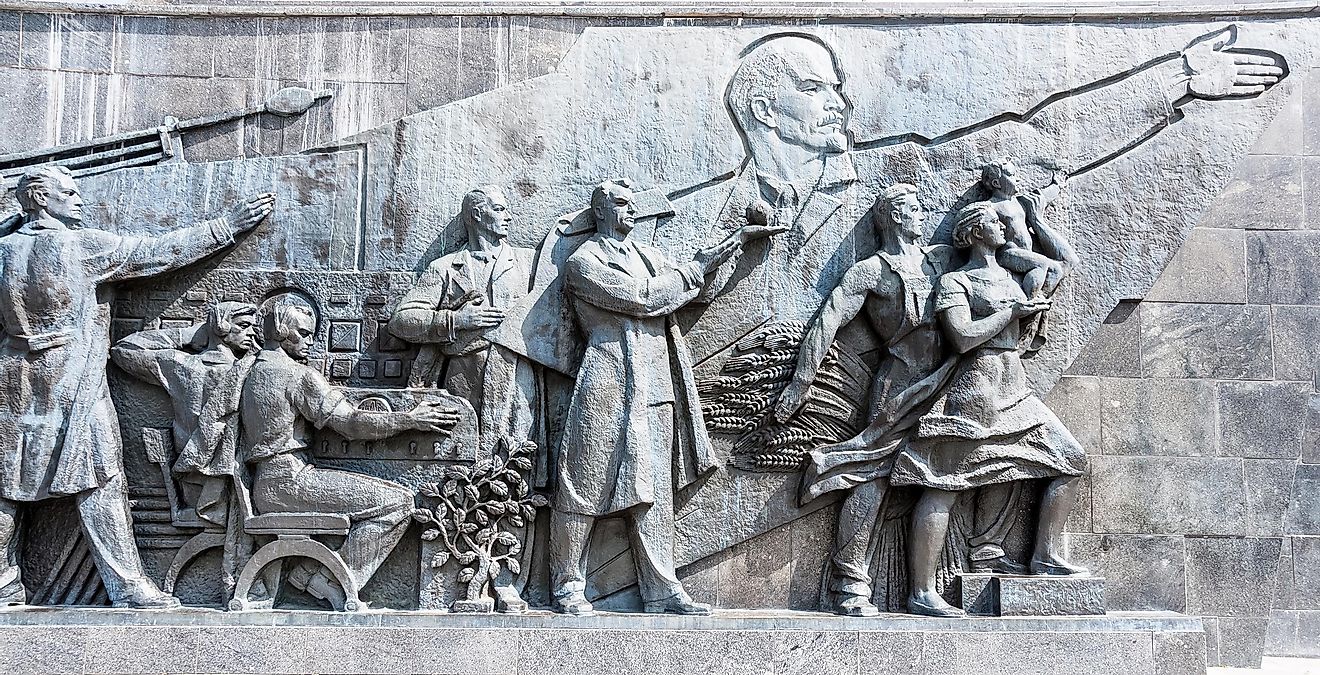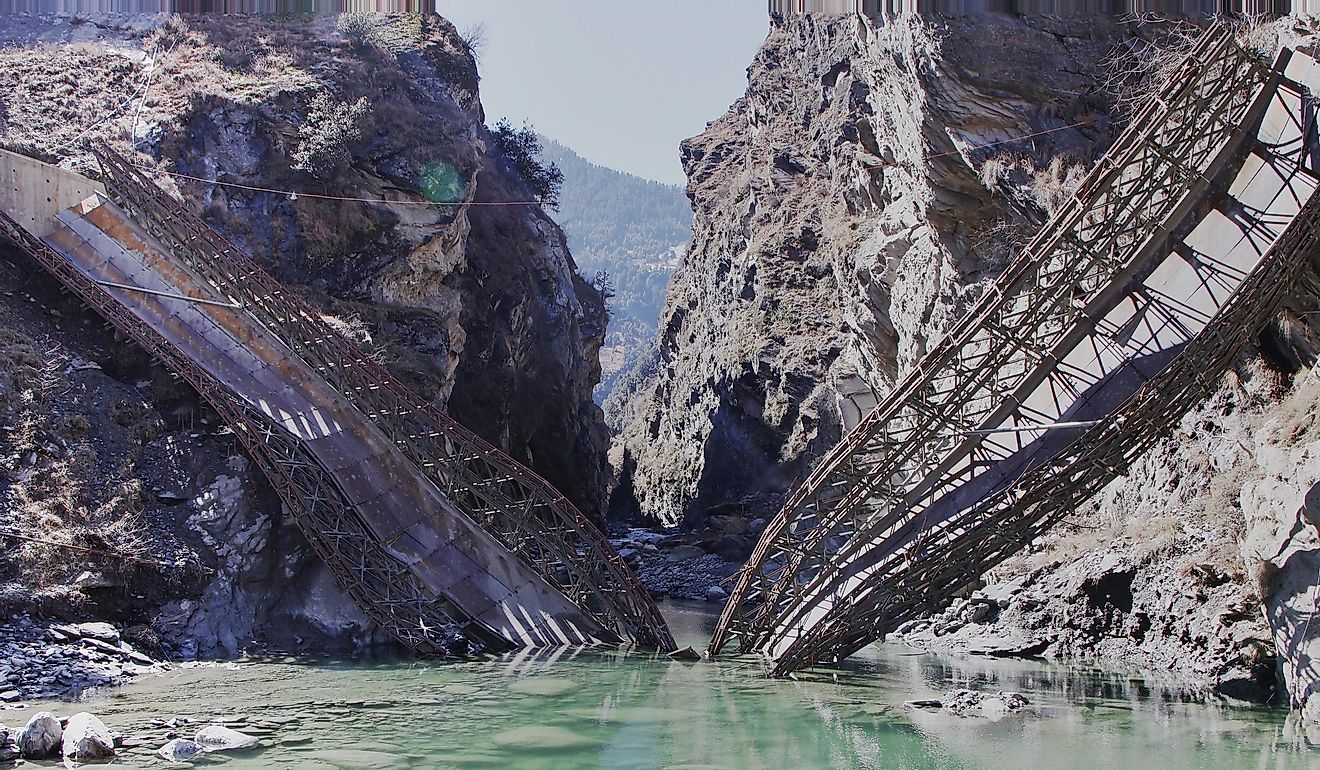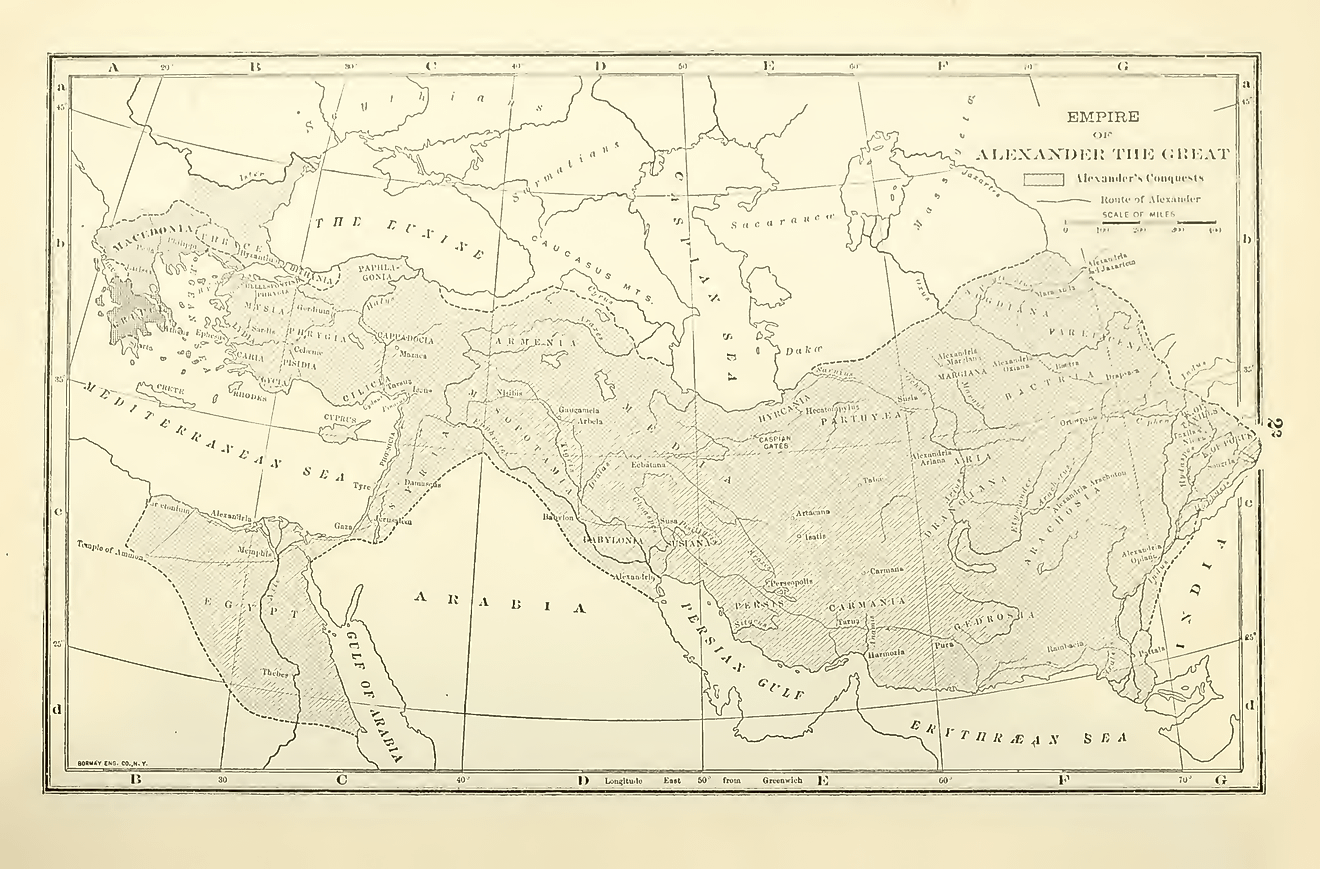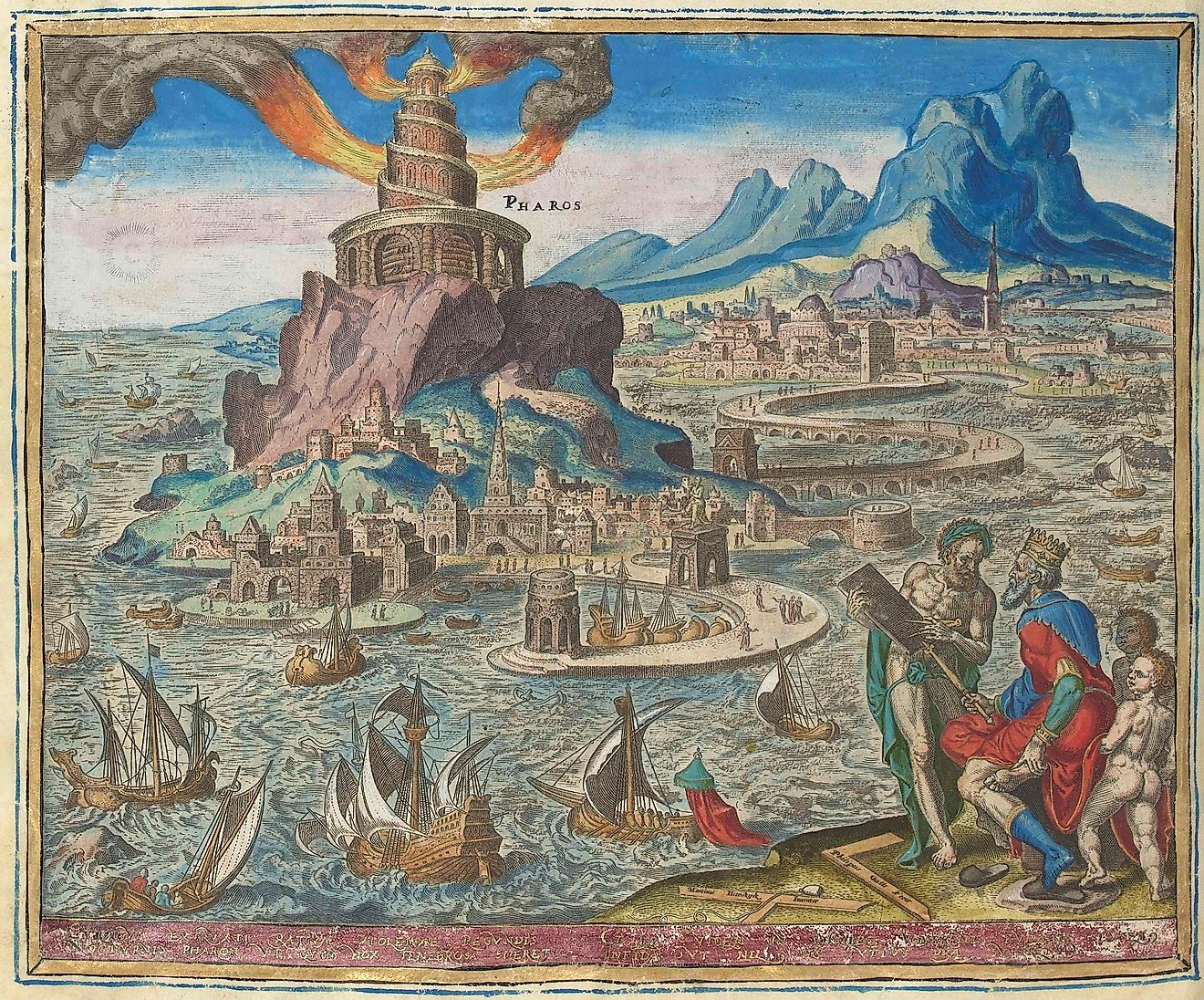The Deadliest Earthquakes Of The 21st Century
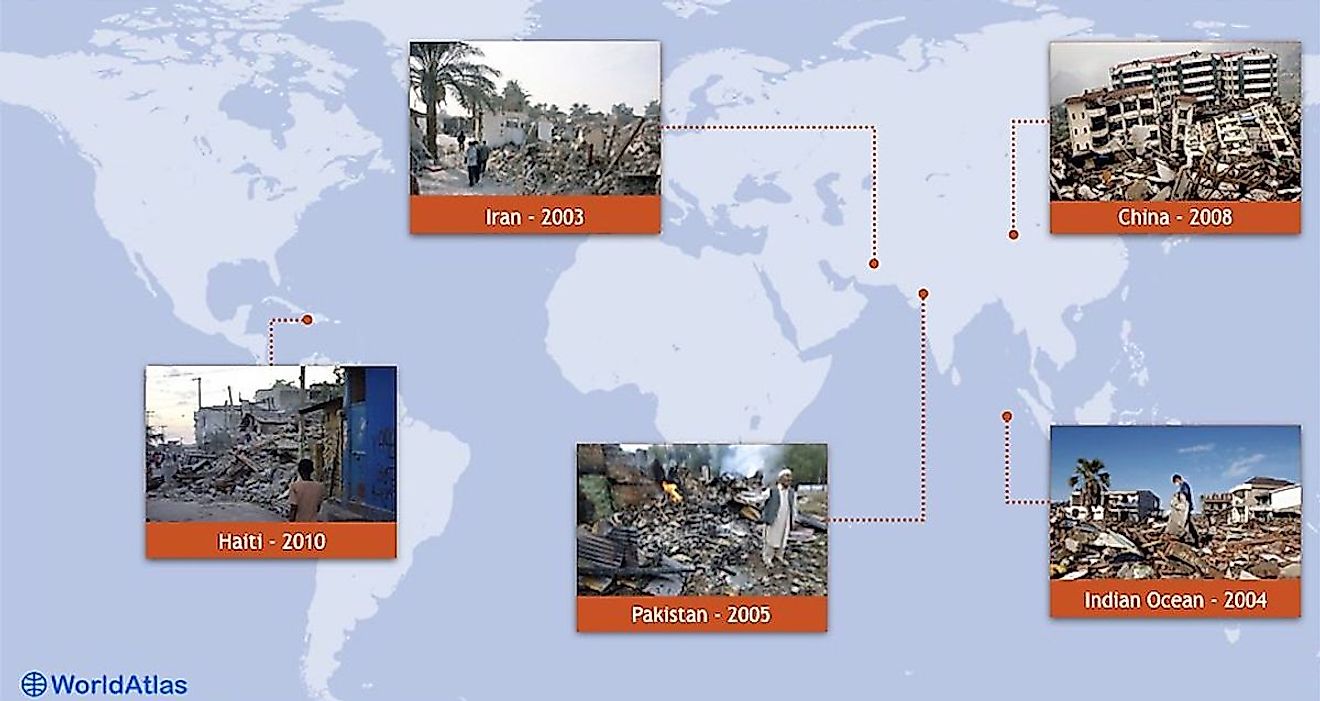
- The Indian Ocean earthquake and tsunami caused the most casualties of all earthquakes that have taken place in the 21st century thus far.
- More than 649,000 people died in the 21st century's ten worst earthquakes combined.
- All but one of the 21st century's worst earthquakes on our list took place in Asia.
Natural disasters are an unfortunate fact of life on Earth. Earthquakes are no exception, especially in areas of the world that are more susceptible to them. They occur when blocks of the planet’s layers move past each other, as they have done throughout the world’s history. While we are only 20 years into the 21st century, more than 657,000 people have already been killed by earthquakes. Many more have been injured and made homeless.
Earthquakes are very difficult to predict and impossible to prevent. They can also trigger other natural disasters, such as tsunamis and landslides. Tragically, earthquakes often occur in countries that are least prepared to deal with such disasters. Here are the ten deadliest earthquakes of the 21st century.
1. Indian Ocean Earthquake and Tsunami, 2004
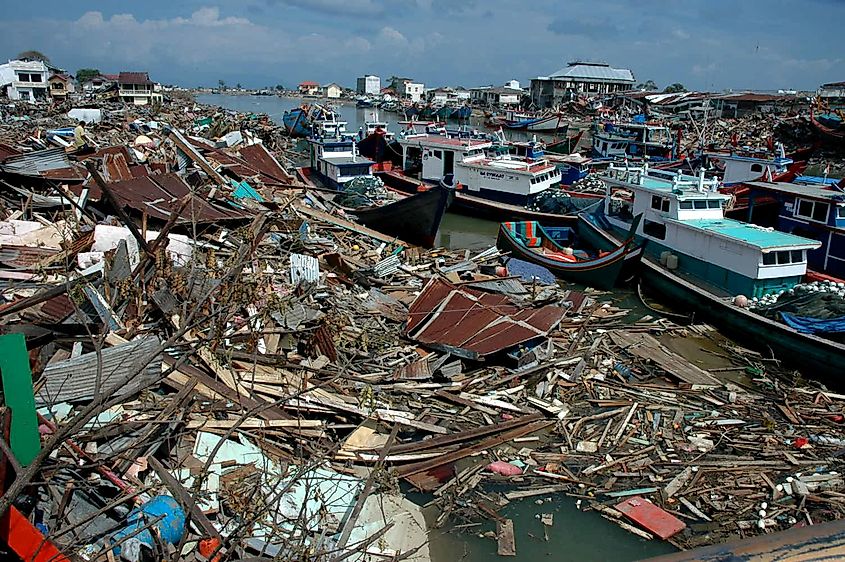
The worst earthquake in the 21st century thus far took place on December 26, 2004. The epicenter of the quake was in the Indian Ocean. It was not the quake, however, that resulted in the deaths of 227,898 people, but the massive tsunami that followed it. The quake had a magnitude of 9.1 on the Richter scale, one of the strongest earthquakes on record. It triggered a massive tsunami that hit coasts from Indonesia in Southeast Asia, all the way to the east coast of Africa.
In just a matter of hours, hundreds of thousands of people lost their lives. In fact, in one of the hardest-hit cities, Banda Aceh, located on the northern tip of the Indonesian island of Sumatra, 100,000 people were killed instantly when the tsunami hit the city with waves measuring 100 feet high (30.5 meters). Also hard-hit by the tsunami were the countries of Sri Lanka, Thailand, and India. The local populations of these countries were not the only ones who sustained casualties. In Thailand, for example, around 2,000 tourists were also killed. In addition to the multitude of lives lost, hundreds of thousands of others were left homeless.
2. Haiti, 2010
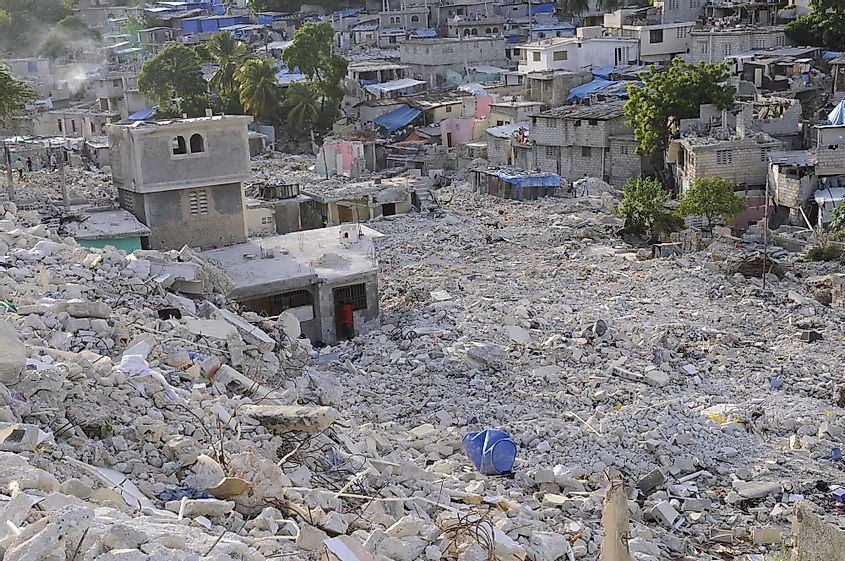
On January 12, 2010, a strong, 7.0-magnitude earthquake rocked the country of Haiti, the poorest country in the western hemisphere. The epicenter of the quake was just 15 miles (25 km) southwest of the country’s capital and largest city, Port-au-Prince. It was the strongest earthquake to hit the country since the 18th century. Strong aftershocks also followed the initial tremor. When it was all over, at least 160,000 people were dead, with some estimates even higher than that. Because of the rush to bury the dead to put efforts towards cleanup and recovery, a more exact count of the dead is not possible.
An already impoverished country, much of Haiti was reduced to ruins by the quake. Many buildings collapsed with ease as the country lacked adequate building codes, let alone proper reinforcement for earthquakes. Port-au-Prince, where much of the carnage took place, was still recovering from tropical storms and hurricanes that lashed the country less than two years prior. It is estimated that 3 million people, about one-third of Haiti’s population, were affected by the quake. One million were made homeless. To make matters worse, it was extremely difficult for aid to come in and be distributed in the country. In fact, much of that aid was mismanaged, and ordinary Haitians were made to suffer as a result.
3. Sichuan, 2008
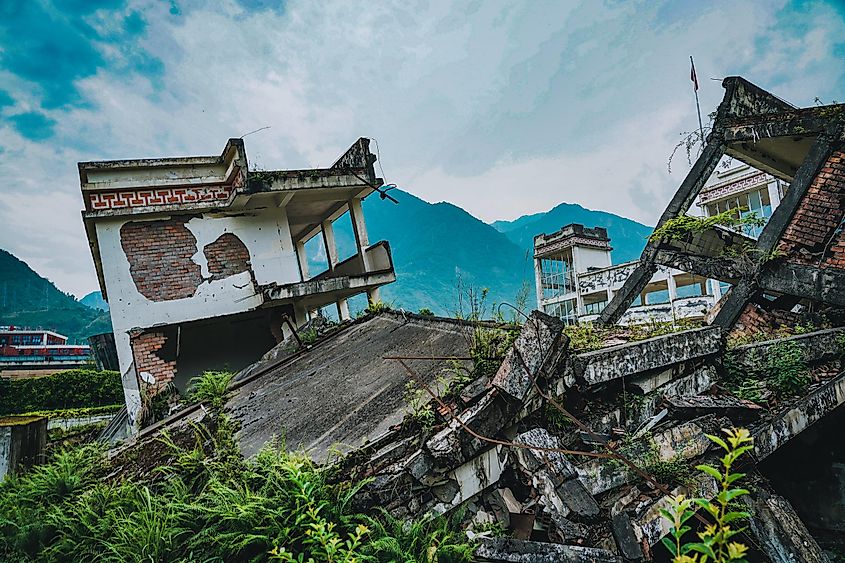
Sichuan is a province of the People’s Republic of China and is located in the country’s southwest. On May 12, 2008, an earthquake with a 7.9 magnitude hit the central region of the province. The epicenter of the quake was Dujiangyan, a city with a population of over 660,000. When it was over, about four-fifths of the structures in the affected area were flattened. Entire villages and towns were destroyed.
The total number of people killed by the quake was 87,587. This figure includes 5,300 children, many of whom were killed as they were studying in school. Nearly 375,000 people were also injured in the disaster, and millions were made homeless. The quake also caused flooding and landslides. In fact, it was landslides that were blamed for killing 200 relief workers. The monetary value of the damage caused by the Sichuan earthquake was pegged at $86 billion.
4. Kashmir Earthquake, 2005
On the morning of October 8, 2005, a strong, 7.6 magnitude earthquake rocked northern Pakistan. The epicenter of the quake was in a city called Muzaffarabad, the capital of the Pakistani-controlled part of Kashmir. Total casualties numbered 87,351. An additional 38,000 people were injured in the disaster, and millions were left homeless. In addition, approximately 780,000 buildings were either totally destroyed or damaged beyond repair. These buildings included schools and hospitals near the epicenter.
Animals were also not spared by the quake. In fact, 250,000 farm animals died, and another 500,000 large animals required immediate shelter due to harsh winter conditions. In some cases, it was difficult to get relief aid to some affected areas, as the quake severely damaged road networks and land connections to certain areas were cut off. Utilities like water and power were also cut off, though most of them were restored in a matter of weeks. It was estimated that about 3.5 million people were directly or indirectly affected by the 2005 Kashmir Earthquake.
5. Bam Earthquake, 2003
Iran is no stranger to earthquakes, and on December 26, 2003, one took place in the city of Bam, home to approximately 97,000 people. The quake, with a magnitude of 6.6, was the strongest to hit the country in 30 years. Casualties from the disaster totalled 26,271, though some estimates put this number much higher, at upwards of 43,000. The quake also destroyed all the hospitals and health centers in the area, where up to 30,000 people were injured. In addition, 75,000 people were made homeless, and 5,054 children were orphaned. Experts have blamed poor building methods and lax regulations for the high number of casualties.
6. Tohoku Earthquake and Tsunami, 2011
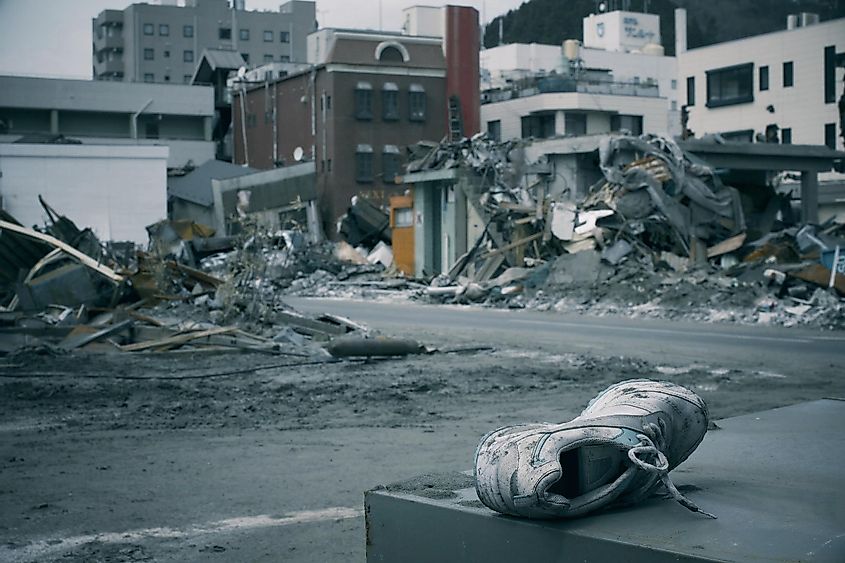
The Tohoku earthquake was the strongest ever to hit Japan in the country’s recorded history. The quake struck on March 11, 2011 with a whopping 9.0 magnitude. The epicenter of the tremor was not on land, but in the North Pacific Ocean, 81 miles (130 km) from the Japanese city of Sendai, located in the northern part of Honshu, Japan’s largest island. The quake triggered a tsunami with waves of up to 132 feet high.
In the end, 20,896 people lost their lives, and 450,000 were made homeless. The quake and tsunami that followed it also triggered another disaster in the form of a nuclear meltdown at the Fukushima Daichii Nuclear Power Plant. This meltdown released toxic, radioactive material into the environment. It also forced thousands of people to evacuate their homes and businesses.
7. Gujarat Earthquake, 2001
Gujarat is a province of India, and is located in the northwest of the country, on the border with Pakistan. On January 26, 2001, the same day people in India celebrate Republic Day commemorating the creation of the Republic of India in 1950, a magnitude 7.7 earthquake hit the province.
The epicenter was a town called Bhuj, located on the Indian side of the India-Pakistan border. It was felt in northwestern India and parts of Pakistan. The quake killed 20,085 people and injured more than 150,000 others. Hundreds of thousands of people were also made homeless, many of whom were still living in makeshift shelters a year later.
8. Nepal Earthquake, 2015
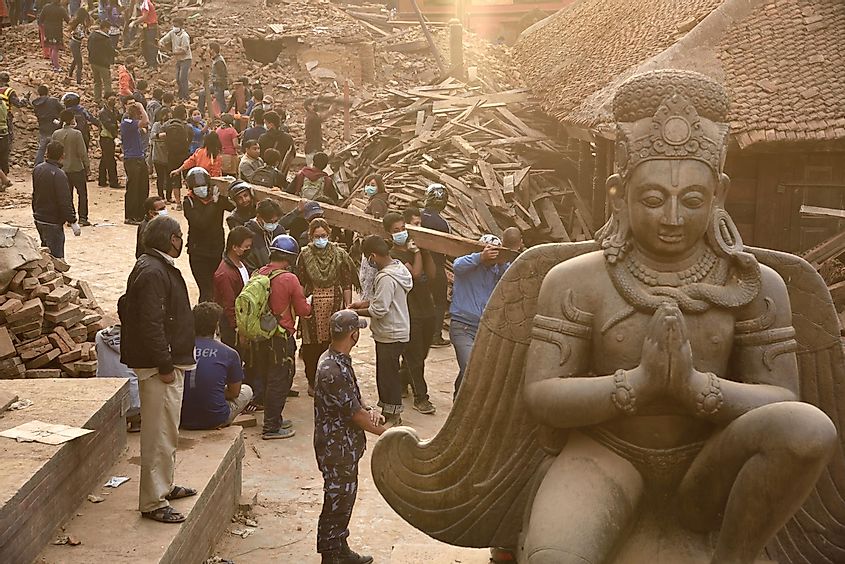
Nepal is a small country sandwiched between India in the south and China to the north. On April 25, 2015, a 7.8 magnitude earthquake struck near the country’s capital, Kathmandu, killing 8,964 people and injuring thousands more. The quake also triggered an avalanche on Mt. Everest that killed 19 climbers and stranded hundreds of others. More than 600,000 structures in the capital were damaged or destroyed. Initial damage from the quake was estimated to be between $5 and $10 billion. This was the worst earthquake in Nepal’s history since 1934, when a magnitude 8.0 quake killed around 10,600 people.
9. Yogyakarta Earthquake, 2006
On the morning of May 26, 2006, a 6.4 magnitude earthquake hit the Indonesian island of Java. The epicenter was located about 15 miles (25 km) south of the city of Yogyakarta. The area is one of the most densely populated places on Earth. It is no surprise, then, that there were mass casualties.
The initial death toll was around 3,500 but it ended up totalling 5,782 people when it was all said and done. The quake destroyed homes, hotels, and government buildings in less than a minute. Much of the area’s infrastructure, including roads, bridges, and utilities were destroyed. Images of people crammed into vehicles trying to get to hospitals or simply evacuate the area filled TV screens.
10. Sulawesi Earthquake and Tsunami, 2018
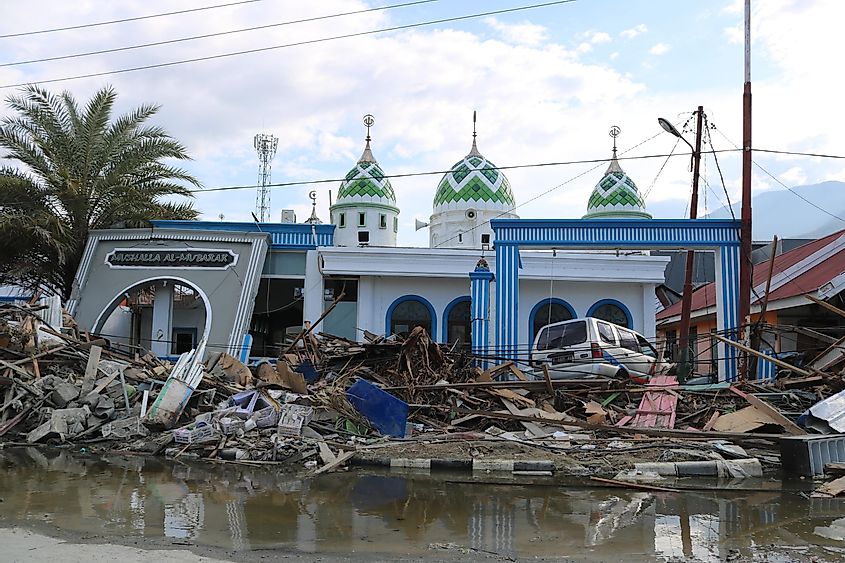
The most recent earthquake on our list occurred on September 28, 2018. The epicenter was located in the waters off the Indonesian island of Sulawesi, 48 miles (77 km) north of Palu, in which about 330,000 people lived. The quake triggered a tsunami measuring ten feet high (3 m), which hit the coastal areas of western Central Sulawesi (Indonesian province), including Palu and Donggala, which had a population of 275,000. The final death toll of the disaster sits at 4,340. Another 60,000 people lost their homes.
The Deadliest Earthquakes Of The 21st Century
| Rank | Event | Fatalities | Magnitude | Location | Date |
|---|---|---|---|---|---|
| 1 | 2004 Indian Ocean earthquake and tsunami | 227,898 | 9.1 | Indonesia, Indian Ocean | December 26, 2004 |
| 2 | 2010 Haiti earthquake | 160,000 | 7.0 | Haiti | January 12, 2010 |
| 3 | 2008 Sichuan earthquake | 87,587 | 7.9 | China | May 12, 2008 |
| 4 | 2005 Kashmir earthquake | 87,351 | 7.6 | Pakistan | October 8, 2005 |
| 5 | 2003 Bam earthquake | 26,271 | 6.6 | Iran | December 26, 2003 |
| 6 | 2011 Tōhoku earthquake and tsunami | 20,896 | 9.0 | Japan | March 11, 2011 |
| 7 | 2001 Gujarat earthquake | 20,085 | 7.7 | India | January 26, 2001 |
| 8 | 2015 Nepal earthquake | 8,964 | 7.8 | Nepal | April 25, 2015 |
| 9 | 2006 Yogyakarta earthquake | 5,782 | 6.4 | Indonesia | May 26, 2006 |
| 10 | 2018 Sulawesi earthquake and tsunami | 4,340 | 7.5 | Indonesia | September 28, 2018 |
| 11 | 2010 Yushu earthquake | 2,968 | 6.9 | China | April 13, 2010 |
| 12 | 2003 Boumerdès earthquake | 2,266 | 6.8 | Algeria | May 21, 2003 |
| 13 | 2005 Nias-Simeulue earthquake | 1,313 | 8.6 | Indonesia | March 28, 2005 |
| 14 | 2009 Sumatra earthquake | 1,115 | 7.6 | Indonesia | September 30, 2009 |
| 15 | 2002 Hindu Kush earthquakes | 1,000 | 7.4 | Afghanistan | March 25, 2002 |
